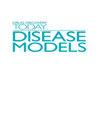横膈肌在健康和疾病中的适应
Q3 Pharmacology, Toxicology and Pharmaceutics
引用次数: 8
摘要
尽管呼吸是由复杂的神经网络控制的,但它是不需要思考的。膈肌是呼吸过程中产生力/压力的主要肌肉,但它也参与其他非通气排出行为。这篇综述考虑了横膈膜肌纤维类型和横膈膜神经控制在我们的一生和各种疾病条件下的变化。本文章由计算机程序翻译,如有差异,请以英文原文为准。



Diaphragm muscle adaptations in health and disease
Breathing is achieved without thought despite being controlled by a complex neural network. The diaphragm is the predominant muscle responsible for force/pressure generation during breathing, but it is also involved in other non-ventilatory expulsive behaviors. This review considers alterations in diaphragm muscle fiber types and the neural control of the diaphragm across our lifespan and in various disease conditions.
求助全文
通过发布文献求助,成功后即可免费获取论文全文。
去求助
来源期刊

Drug Discovery Today: Disease Models
Pharmacology, Toxicology and Pharmaceutics-Drug Discovery
自引率
0.00%
发文量
0
期刊介绍:
Drug Discovery Today: Disease Models discusses the non-human experimental models through which inference is drawn regarding the molecular aetiology and pathogenesis of human disease. It provides critical analysis and evaluation of which models can genuinely inform the research community about the direct process of human disease, those which may have value in basic toxicology, and those which are simply designed for effective expression and raw characterisation.
 求助内容:
求助内容: 应助结果提醒方式:
应助结果提醒方式:


